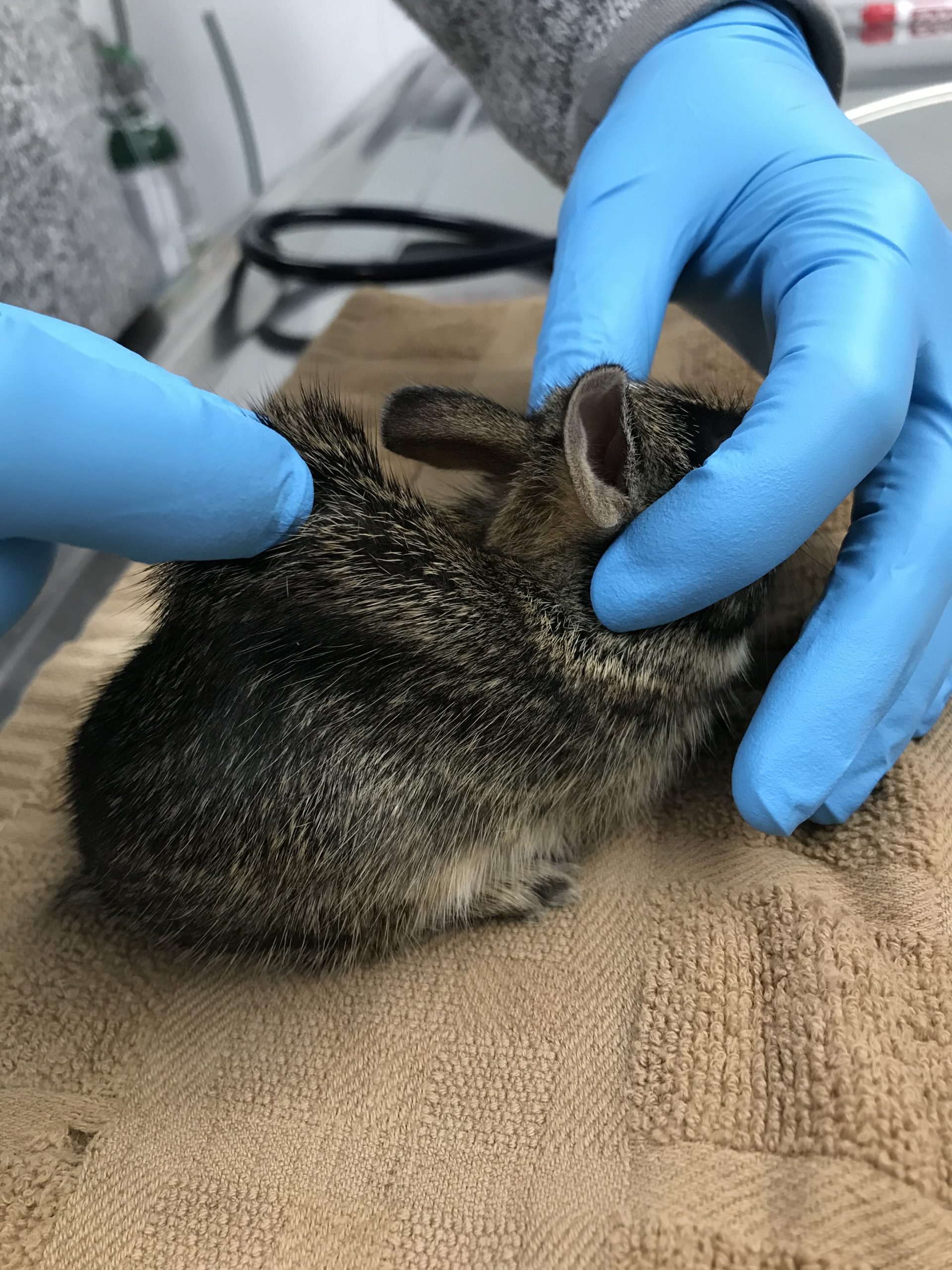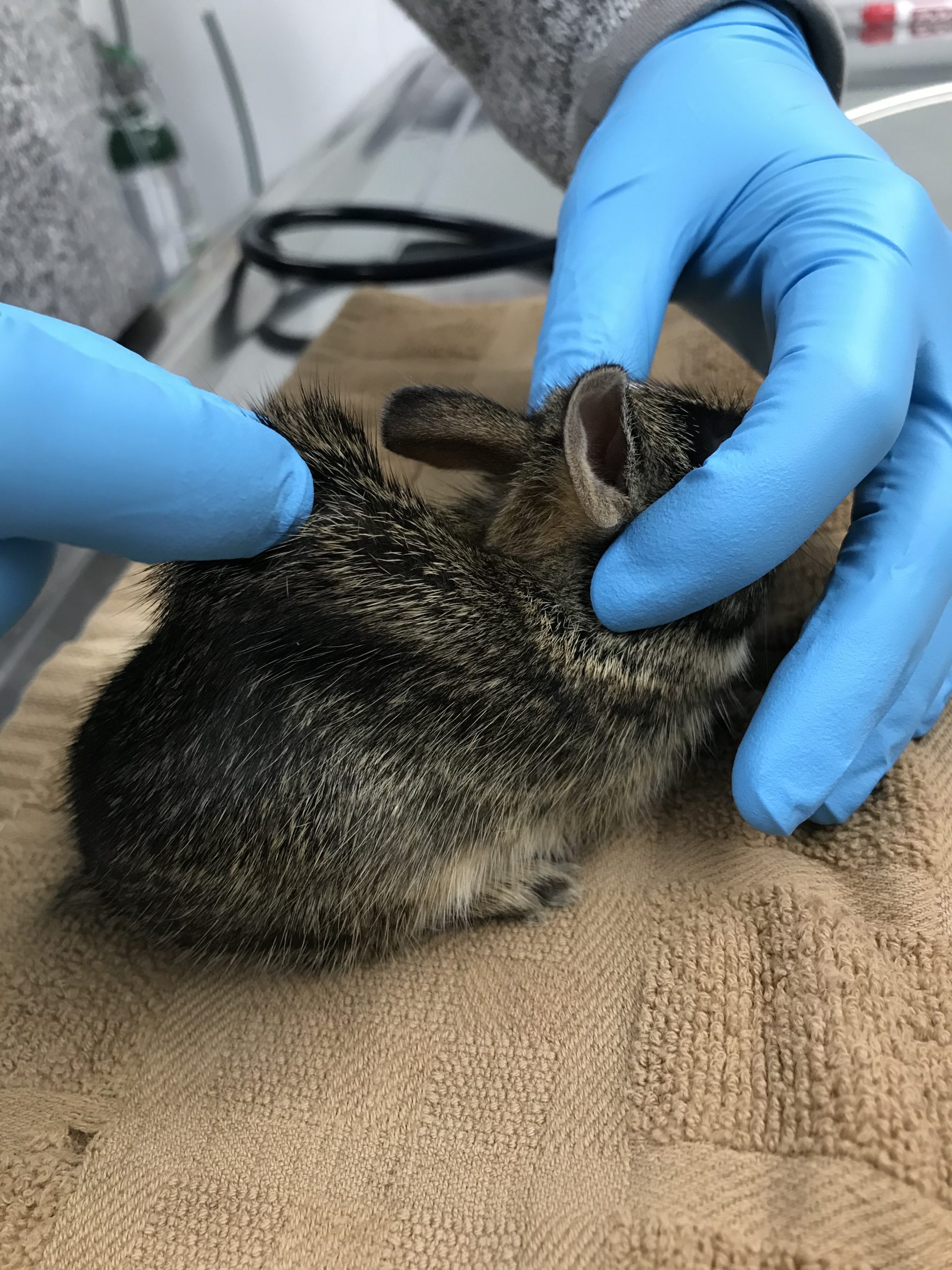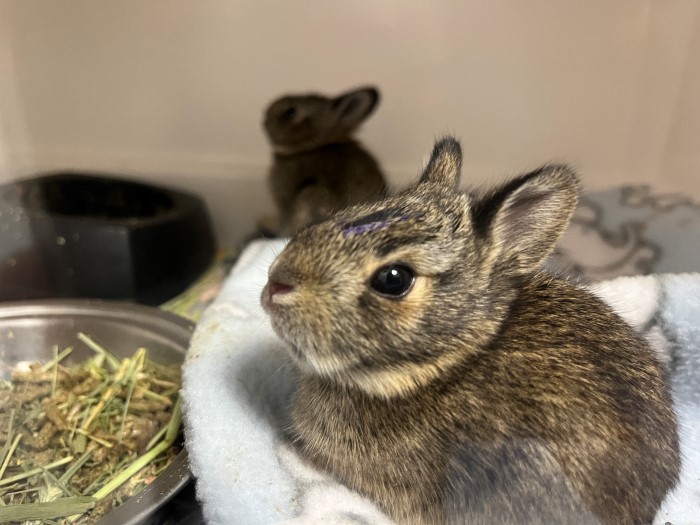Most of the patients we see in the Wildlife Medical Clinic are suffering from a common abnormality in addition to any illness or injury they have: dehydration. While dehydration might not sound that harmful, it can actually be a significant contributor to an animal’s poor prognosis. One of the many reasons we must address dehydration quickly is because a patient’s hydration can affect whether they absorb medications and nutrients from their digestive tract. This means that we must rehydrate a patient before expecting them to eat food or take medications orally. There are many ways we can address a fluid deficit, but all involve careful calculation and planning.

First, we must determine if our patients are dehydrated and the severity of their dehydration. The first step in estimating a patient’s hydration status is looking for specific physical changes. A mammal’s hydration status can be examined by using a “skin tent” test. We gently pinch and pull up on a patient’s loose skin then observe how quickly it returns to a normal position. If a patient is healthy the skin returns to normal in within a second or two, while a dehydrated patient’s skin fold will take longer or may not move back into place at all. You can even try this on yourself by gently pinching the skin on your lower arm or abdomen & seeing if it snaps back into place quickly. For birds and reptiles, it isn’t always possible to find an area of loose skin to tent, so we rely on other changes such as “sunken” eyes or thick strings of saliva in their mouth. These changes are signs we can use to quickly and non-invasively determine what measures need to be taken.
We correct a patient’s dehydration by estimating their deficit and using equations to determine how much supplemental fluid we need to provide. For an animal that is severely dehydrated, introducing too much fluid too quickly can be dangerous. However, not supplementing fluids in time can be similarly harmful. There is a balance we achieve through calculations to ensure we are giving our patients the ideal volume of fluids to replace what they have lost. Once we determine that amount, we distribute it evenly over several days to ease the patient’s body back into a hydrated state.

When an animal is mildly dehydrated, we can rely on them to rehydrate by oral intake of fluids. This process takes time (and animal cooperation), so for our patients we often choose additional routes to supplement fluids. Sterile fluids fortified with electrolytes can be administered subcutaneously (under a patient’s skin). This procedure is minimally invasive and absorbed well by patients. With reptile patients we can also administer fluids into the coelom – essentially a space in the abdomen not taken up by organs. These routes are reliable and ideal for mild-to-moderate dehydration. For severe dehydration, we rely on the fastest possible route – through an intravenous (vein) or intraosseous (bone) catheter. These rapid routes can be used when minutes matter, such as for a patient that has head-trauma or is in shock.
Dehydration can be a complicated condition that we see in many wildlife patients. Though it may seem straightforward to treat, this problem can be fatal if the proper intervention isn’t taken. We must always consider the severity of a patient’s dehydration, the extent of its injuries that may prevent it from rehydrating itself, and the best method to used to rehydrate the patient. By understanding what each patient needs for rehydration, we ensure that our treatments are chosen with the patient’s current hydration status in mind.




